Resolution Tool
Table of contents:
Introduction
Resolution
Resolution of a region
Additional Setting
Hello!
Welcome to the article, in which we are going to learn about SelfCAD's 3D modeling tool called Resolution. I am going to explain all of its ins and outs and present its general applications. On top of that, I will share a few Tips and Tricks that you could use with Modifications.
Resolution is one of the Modify tools available in SelfCAD that you can find in the main Toolbar, in the Modify drop-down list. As its name suggests, it allows you to increase and decrease the level of the detail of the selected objects or selected regions of the object by changing the number of faces that create it.
Modify is a unique category because the tools in it do not rely on the topology of the object to apply their modifications. Instead, they cut the object and add to its topology when needed.
Follow the article to learn all about this tool!
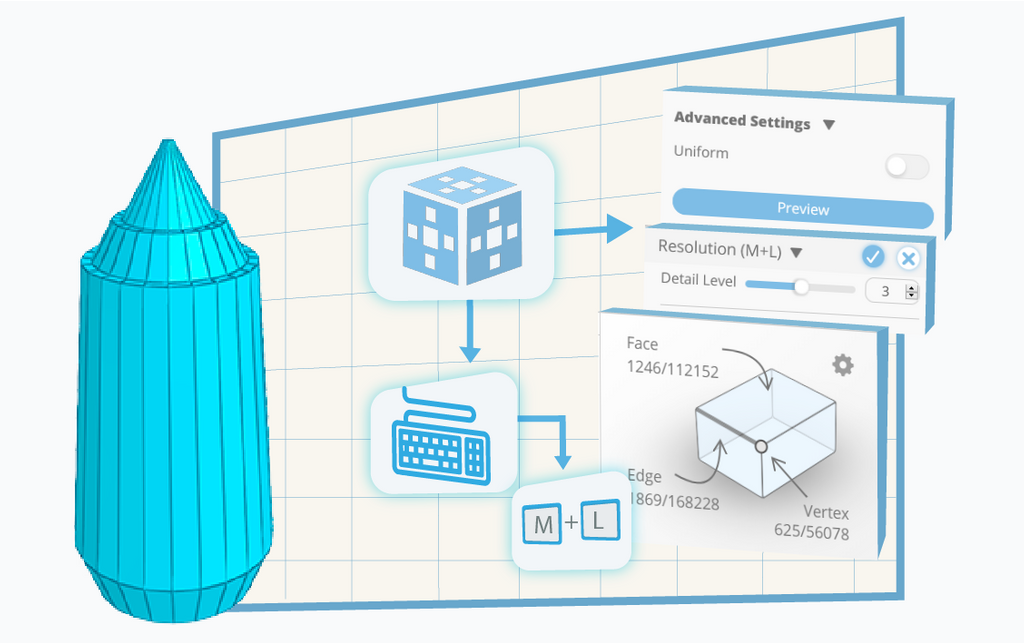
Select the object
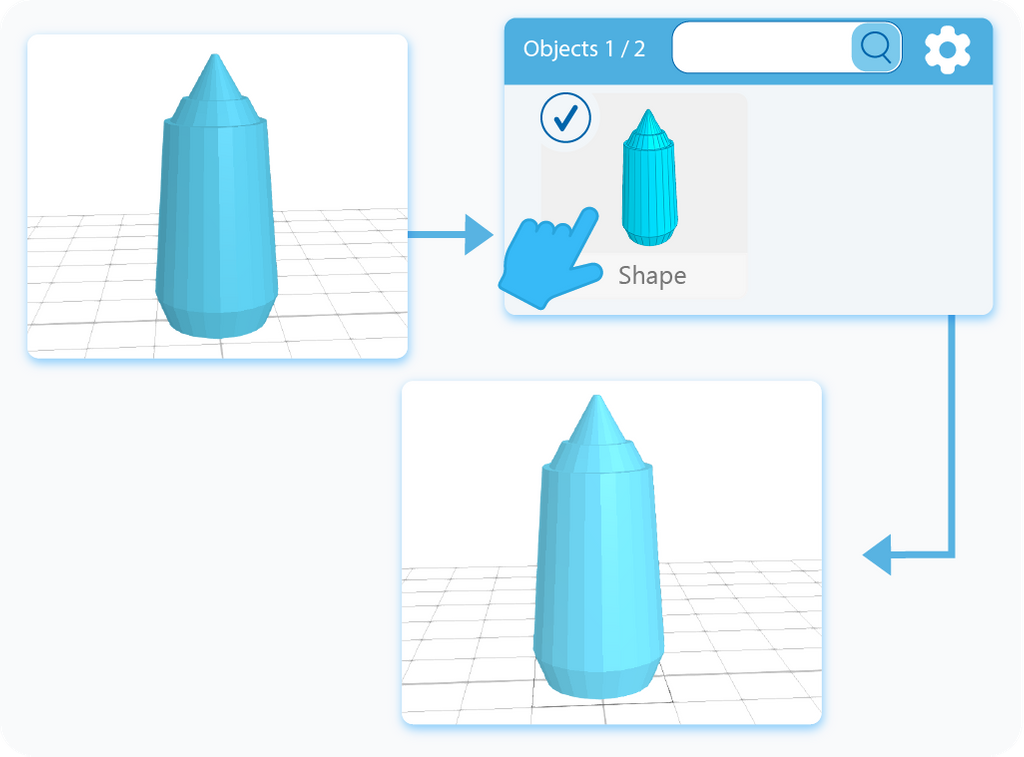
The first step of using any modeling tool is selecting the object on which you want to use it. You can select objects by either left-clicking on them in the workspace or by selecting them in the Object Management section, in the right-side panel. The second option has an in-built search engine, which is extremely useful when you are working with multiple objects.
Activate the tool
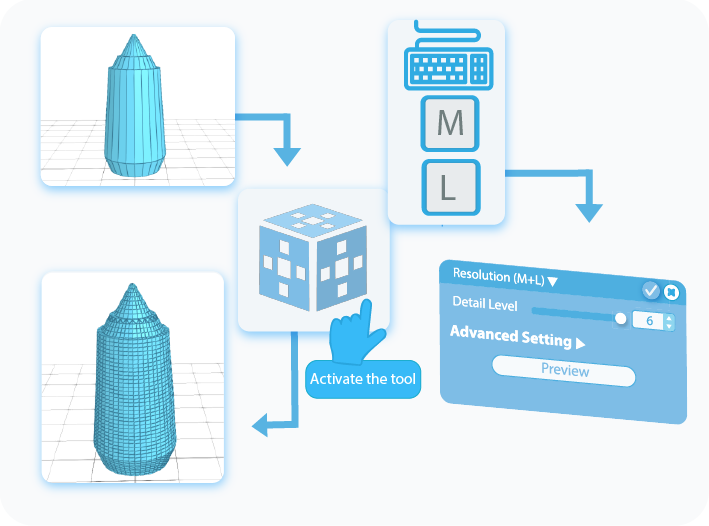
Once the object is selected, you can activate the Resolution tool by selecting it from the Modify drop-down list or using a shortcut by pressing the ‘M+L’ combination on your keyboard. This way, you’ll open a Tool Setting Panel with all of the customizable options for this tool on the left side of your screen.
Set Resolution
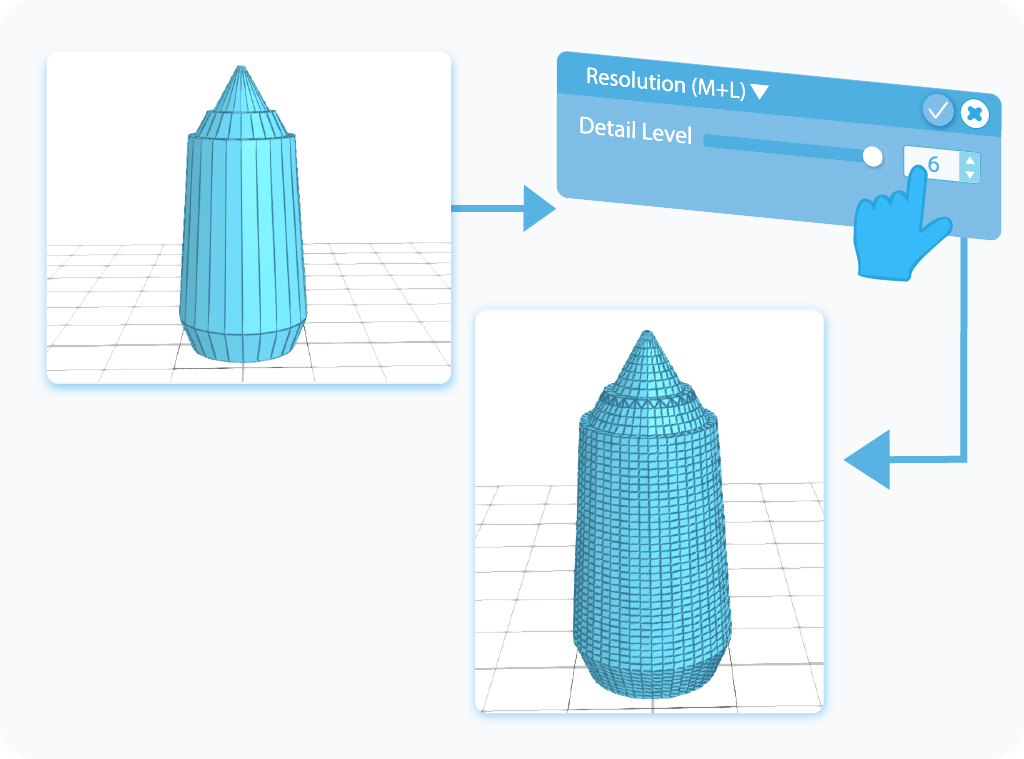
Now you start changing the Resolution of the object. There is a single option called Detail Level, which, as its name suggests, allows you to change the Resolution of the object. As always, you can change this setting by either moving the slider or by typing the value directly into the text-box in the Tool Settings Panel.
Select a region
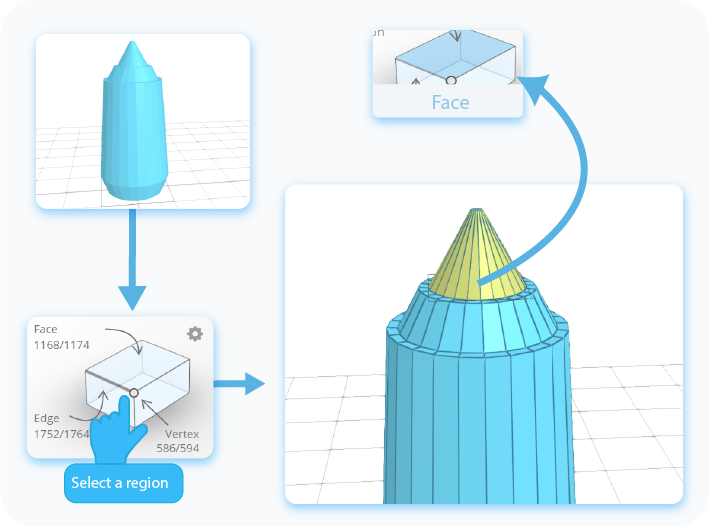
SelfCAD allows you not only to set the Resolution of the Object itself but also that of some of its regions. To do so, you need to select them first. In the Right Side Panel, you will find an Interactive Rectangle, where you can enter one of the following selection modes: Face, Vertex, and Edge. Then, you can select the parts of the object that you want to modify.
Set Resolution of a region
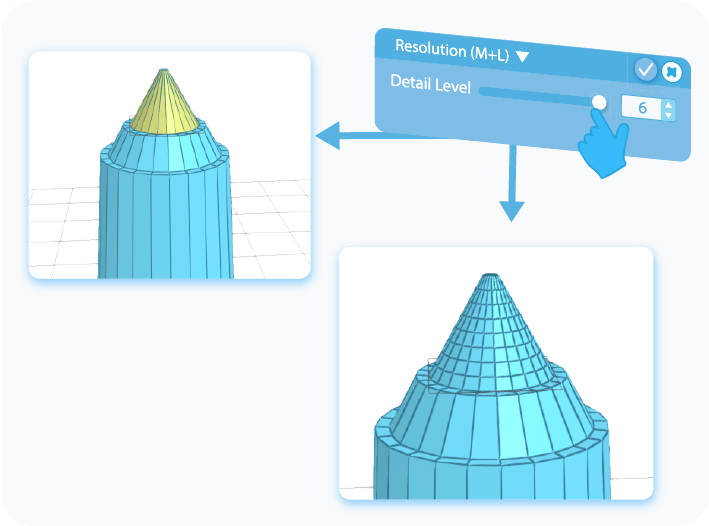
Changing the Resolution of the regions works exactly the same as changing it in the entire object. After selecting a region or regions that you want to modify, you can customize the Level of the Detail by either moving the slider or by typing the value directly into the text-box. However, you should know that after changing the resolution of a region, the model itself ceases to be a manifold.
Uniform
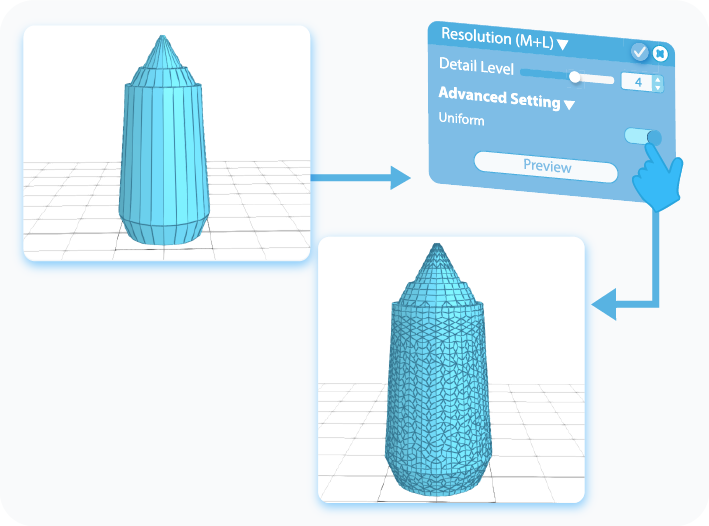
At the bottom are the Advanced Settings of the Resolution tool. After expanding the drop-down list, you will notice a single setting, which allows you to change the method of measuring used to modify the Level of Detail. By enabling the Uniform setting, instead of splitting the geometry into equal Quads or Triangles, you will divide it based on the Voronoi diagram.
And that’s about it for the Resolution. After reading this article, you should know the basics of the Resolution tool and how to use it, and know about its different applications. Of course, the graphics shown here were just examples, and using this tool on other shapes will give you slightly different effects, but its underlying principles will always stay the same.
That's all I have for you today. I wish you success in your future projects. See you, and stay tuned for more content to come!
Haven't tried SelfCAD yet? Register now, and try it out for free!
Do you want to learn 3D modeling? Check out our interactive tutorials.




